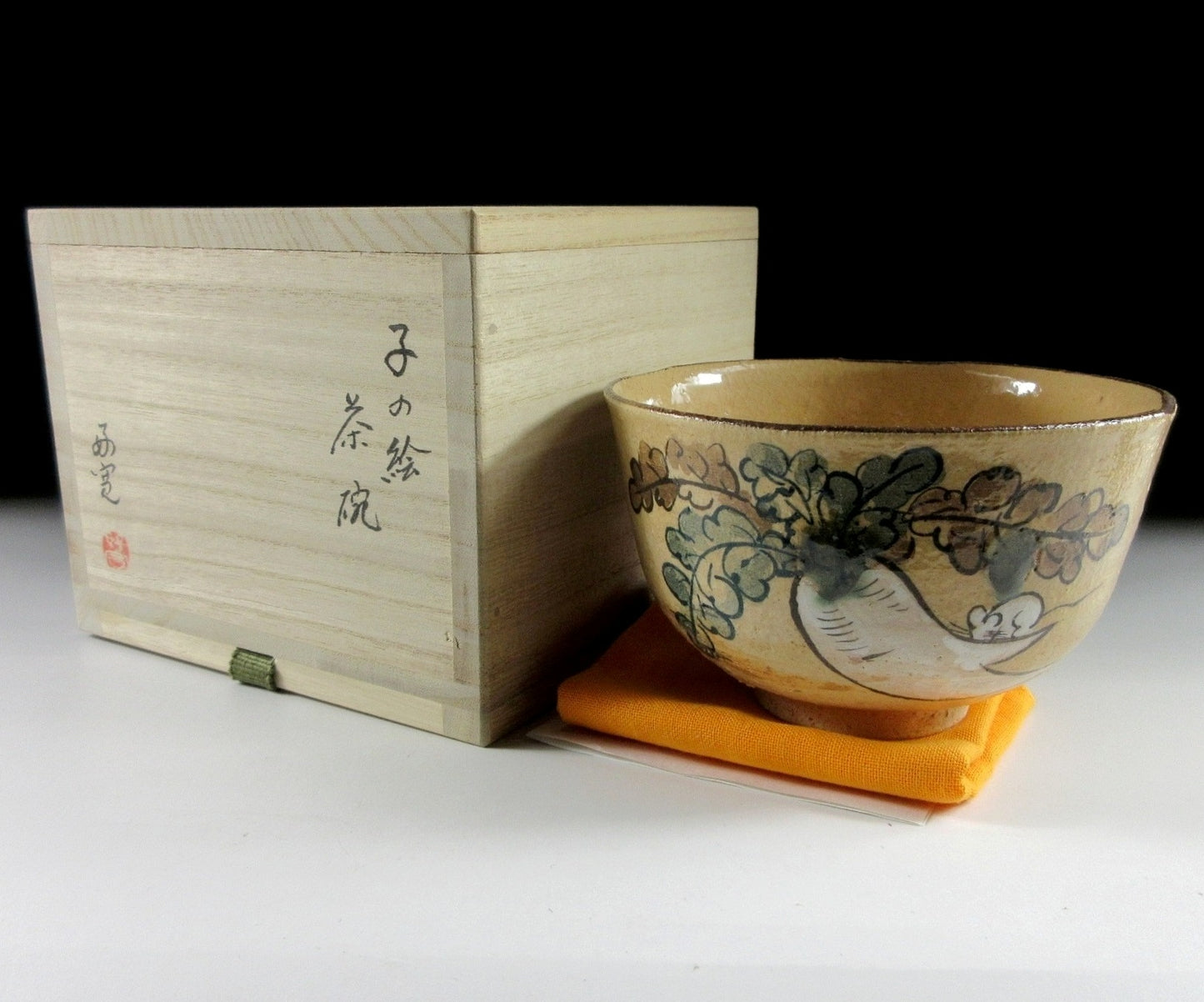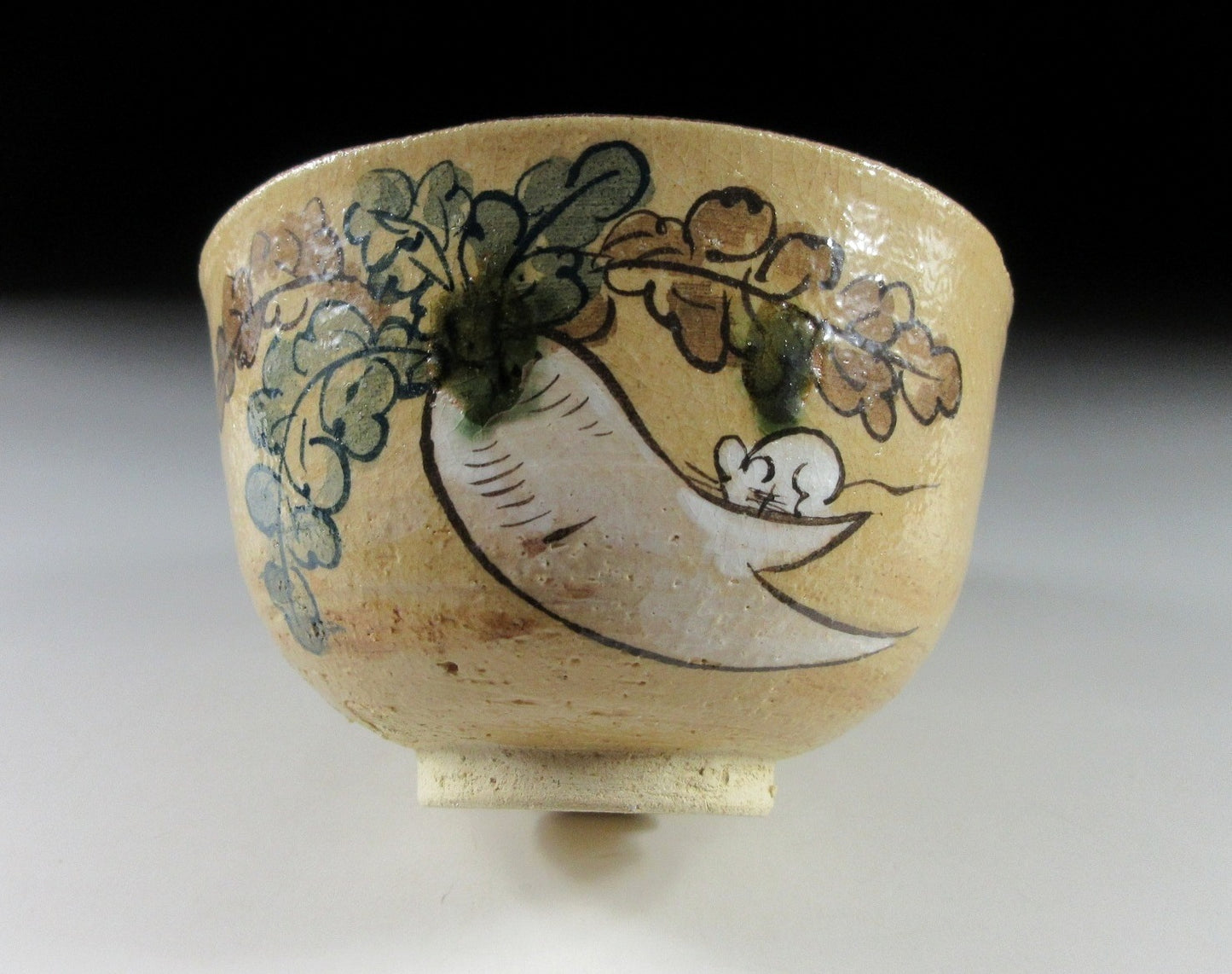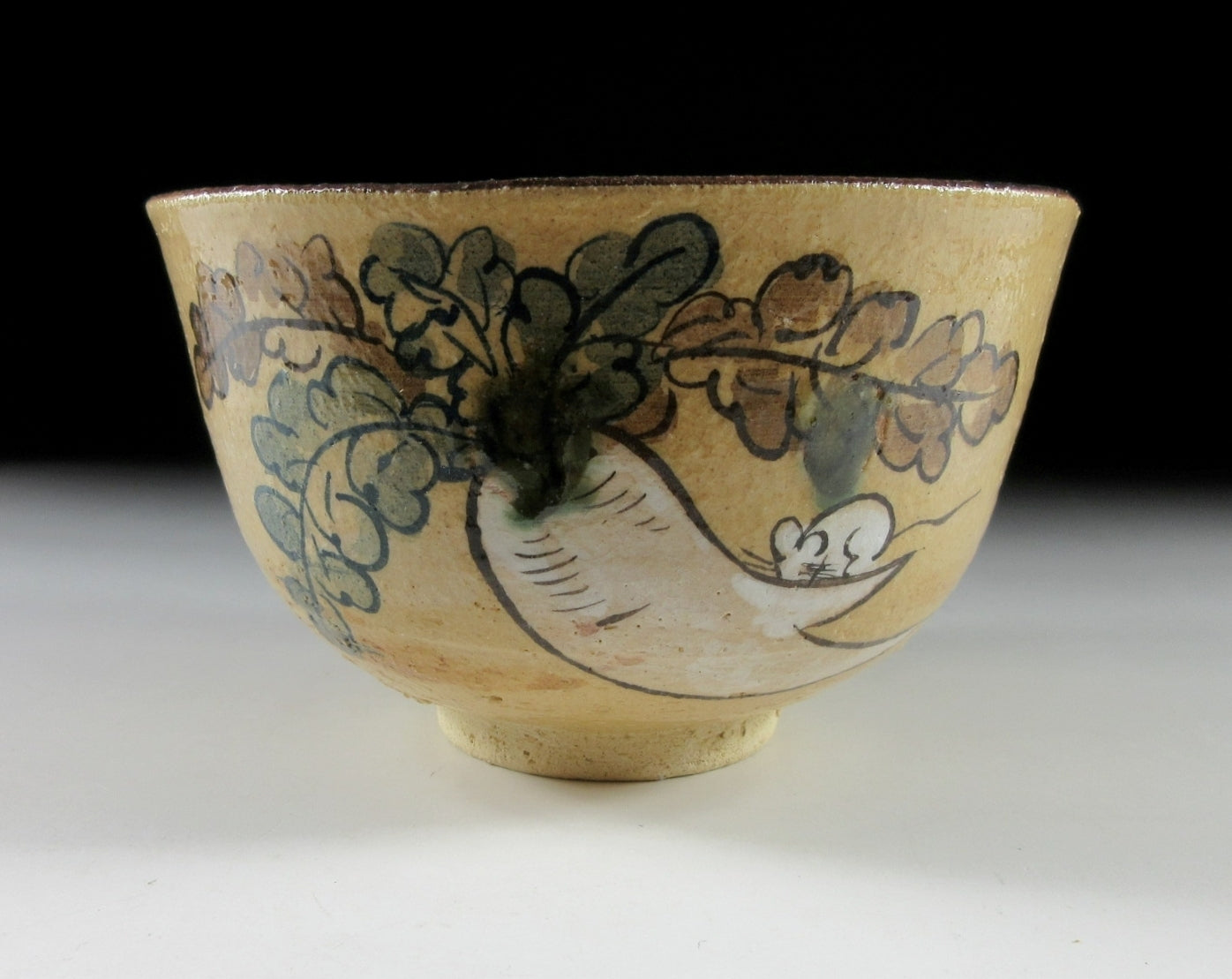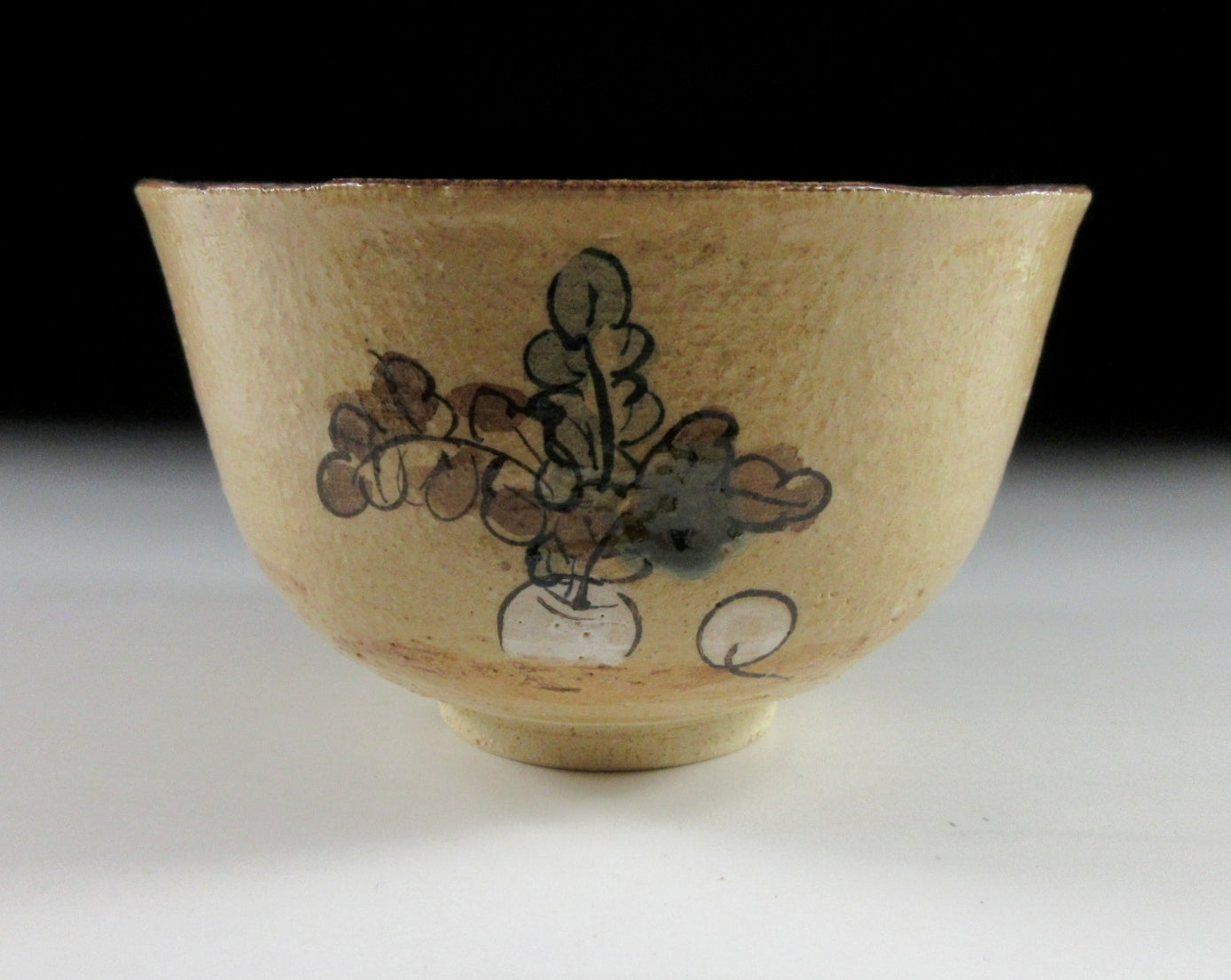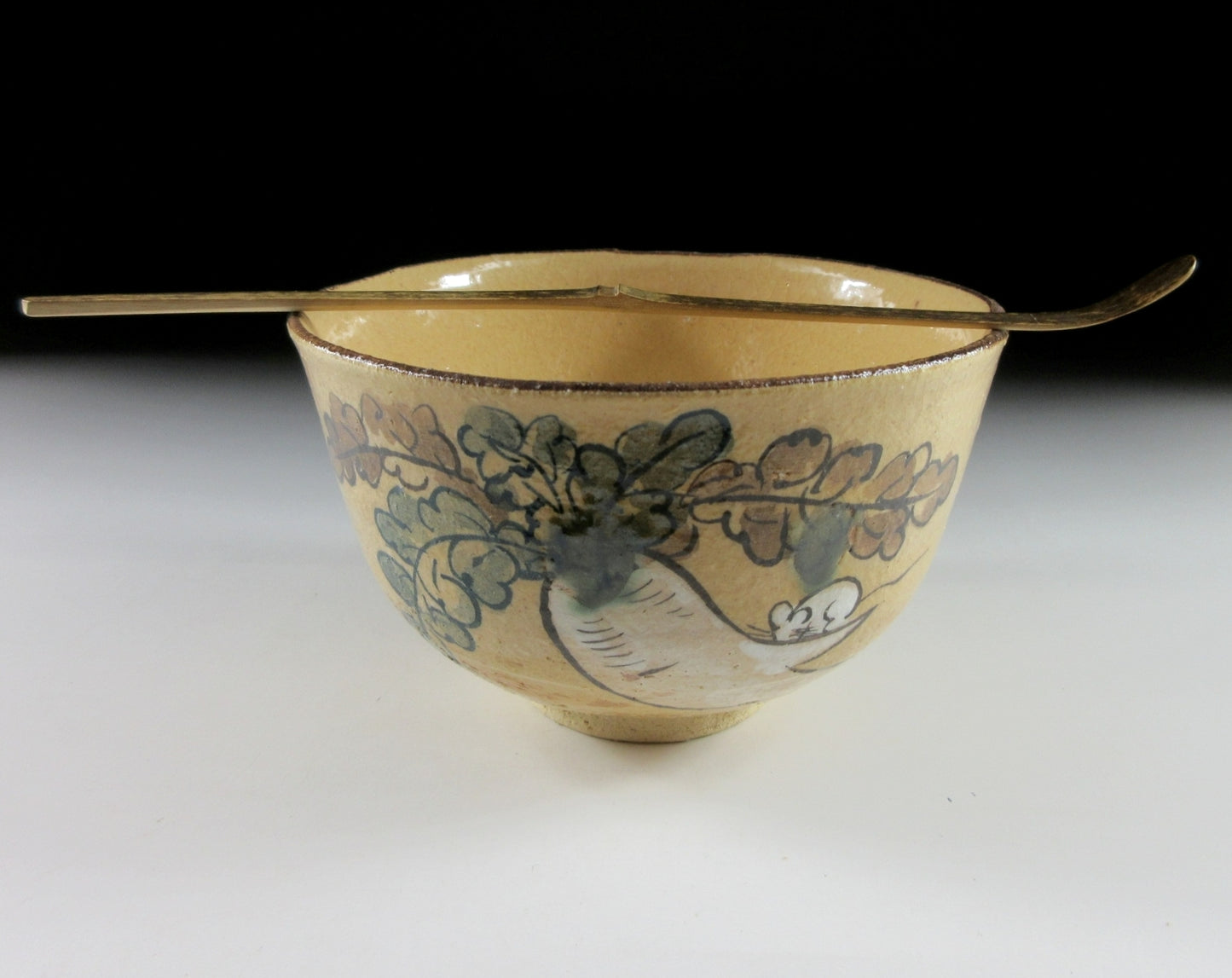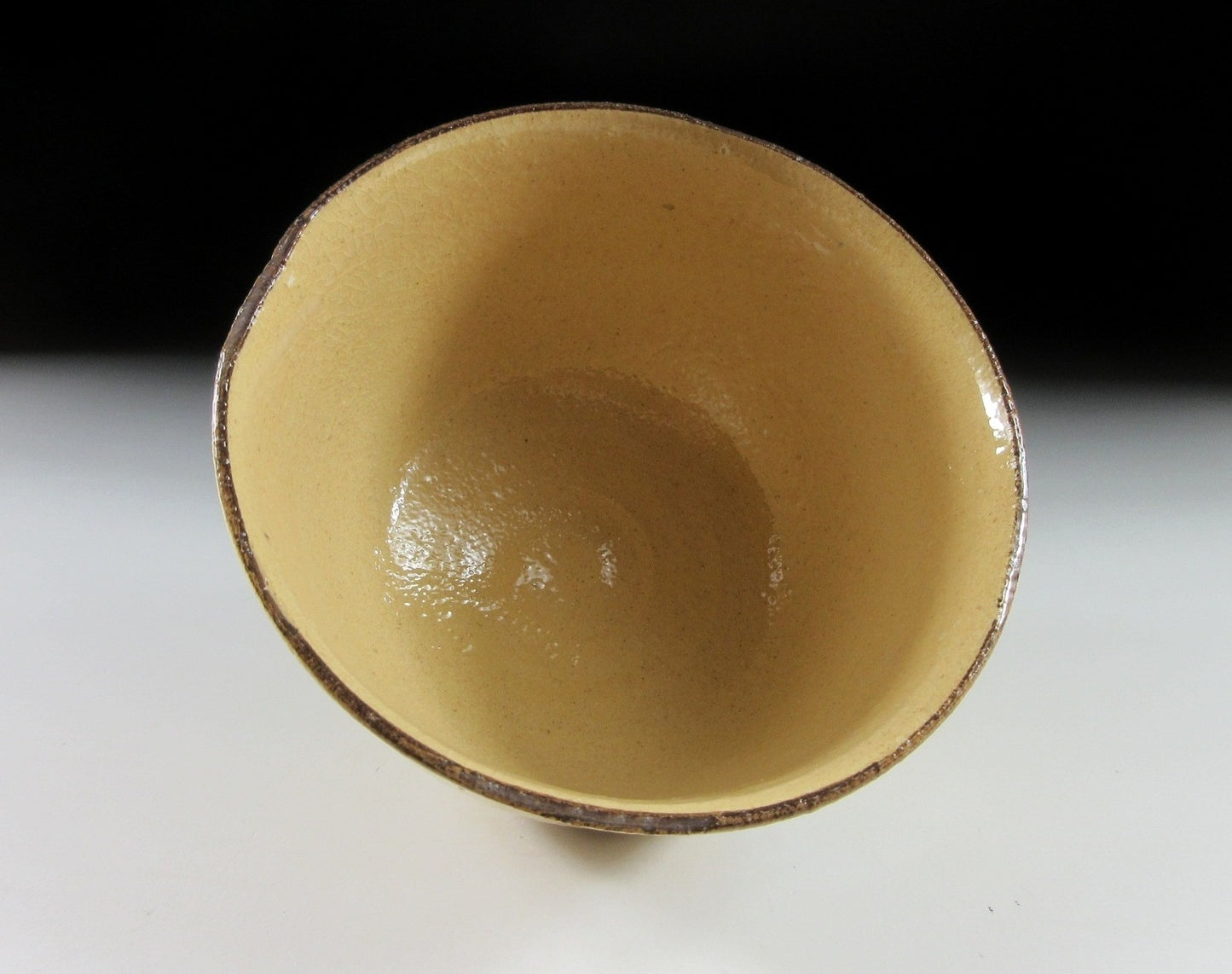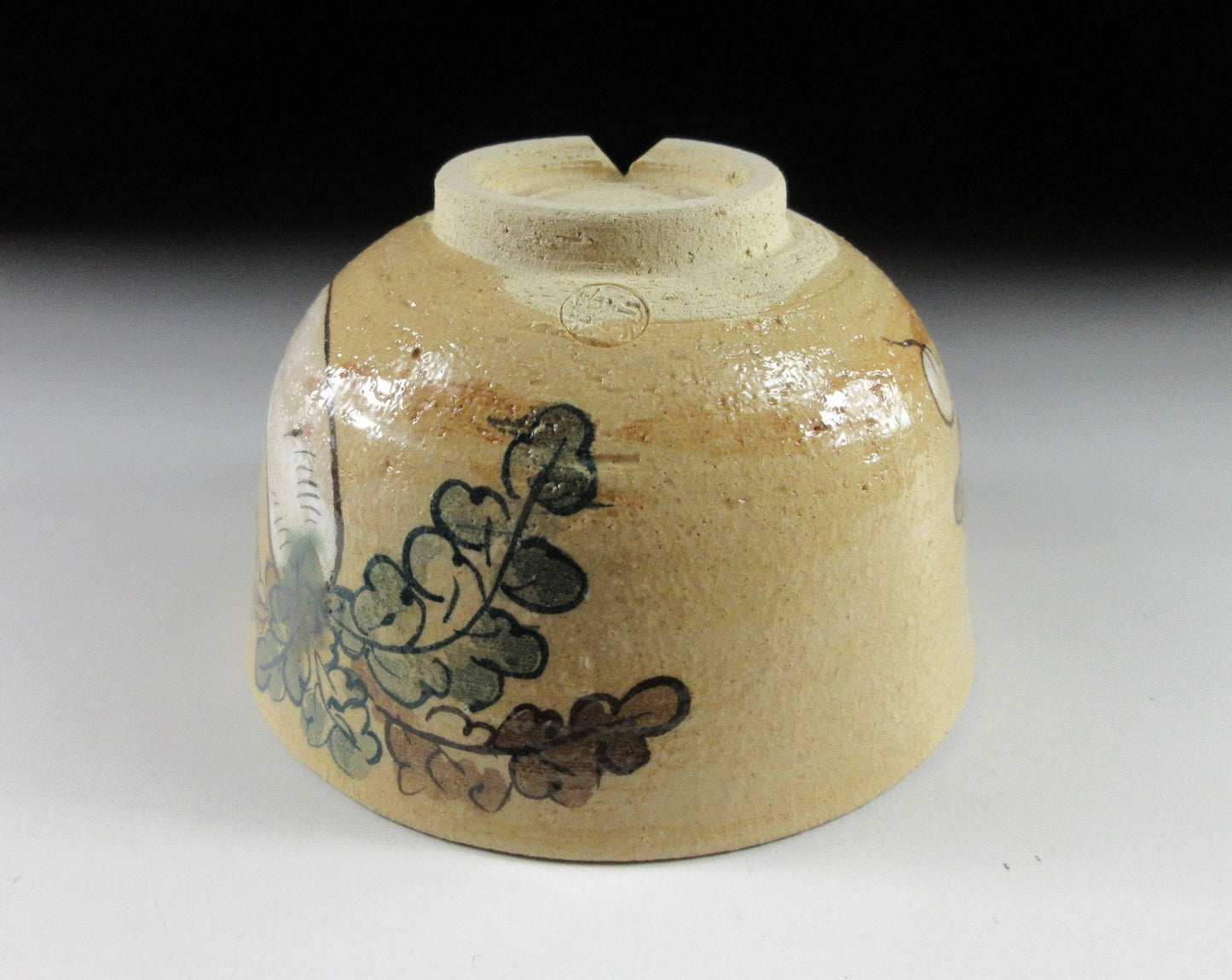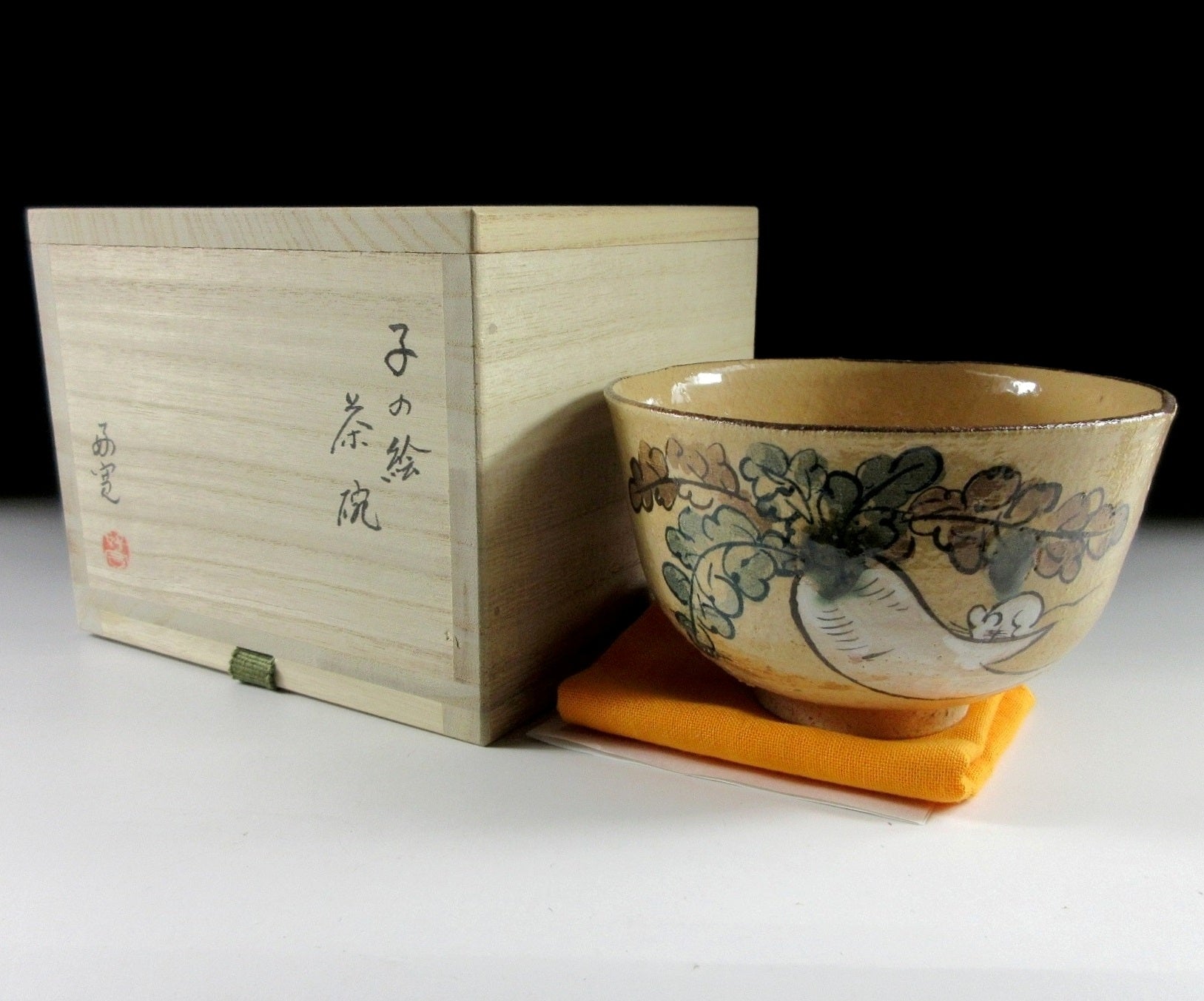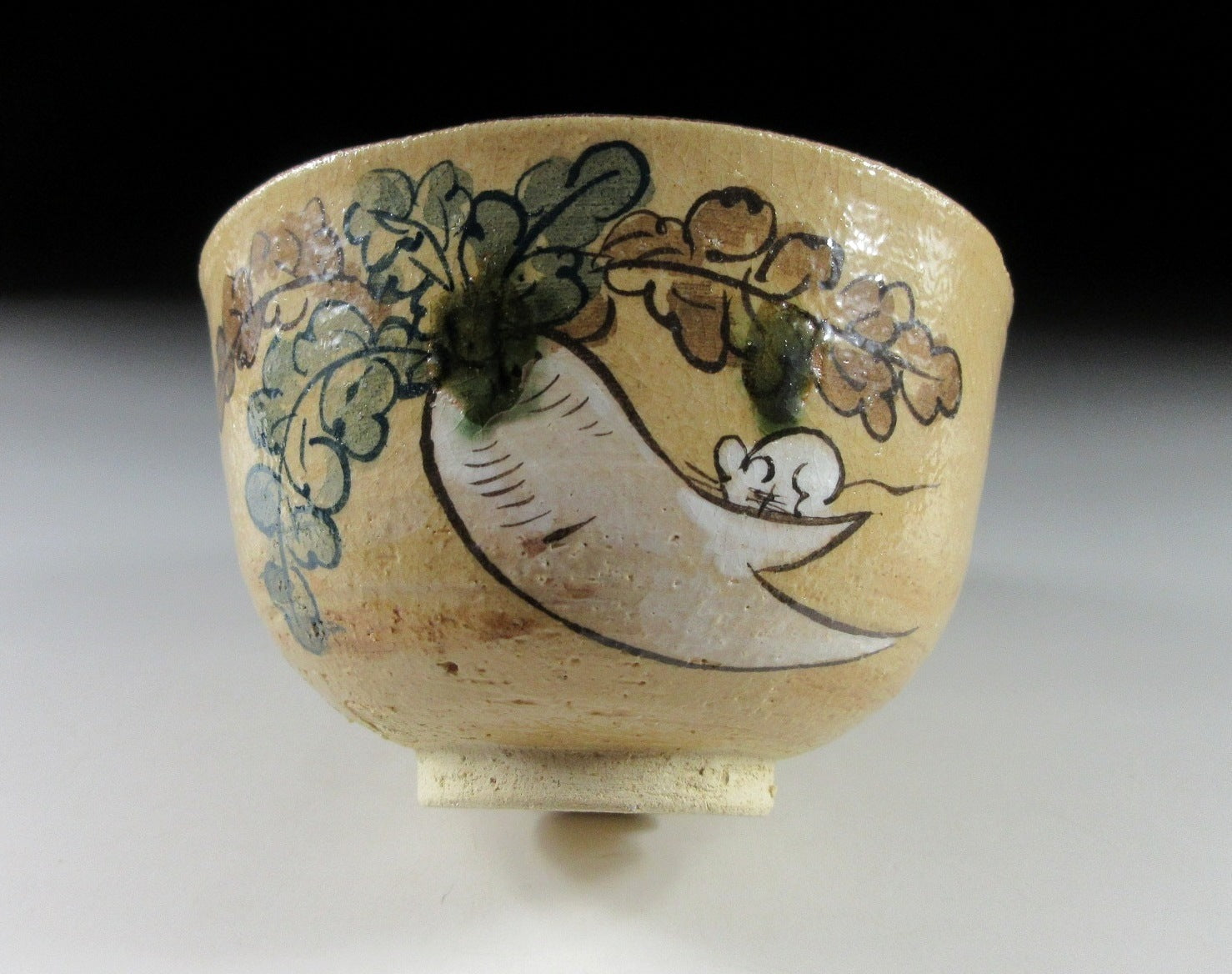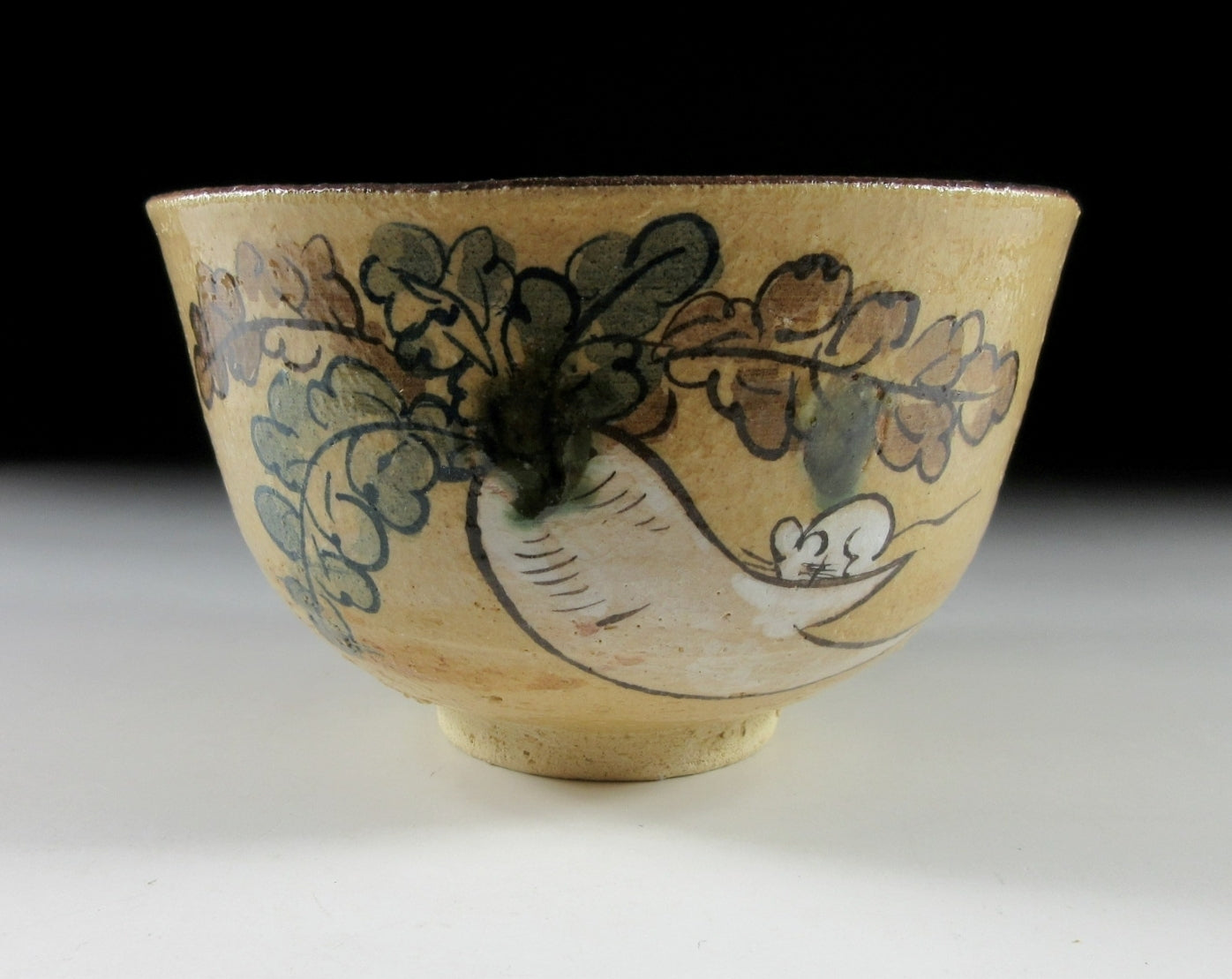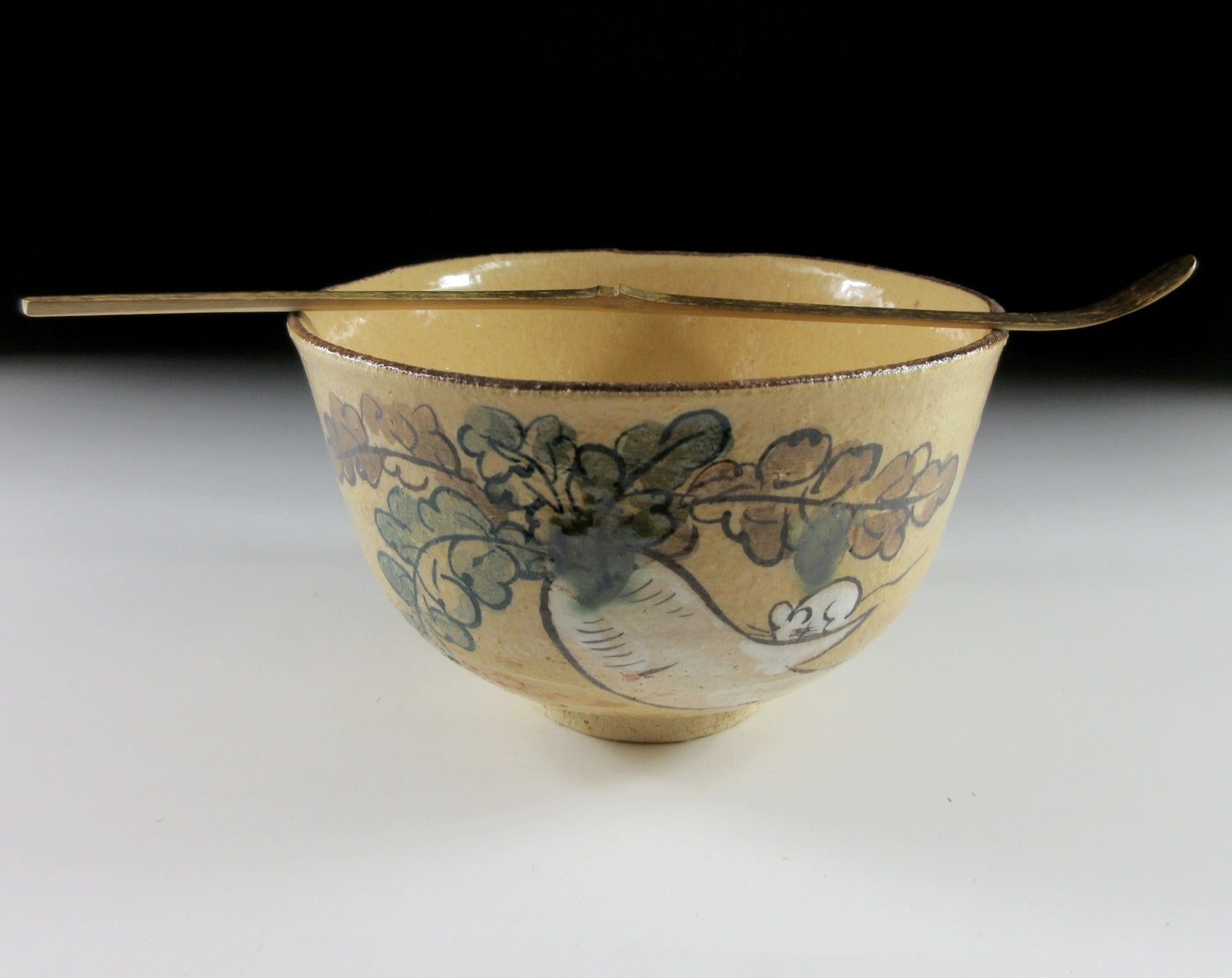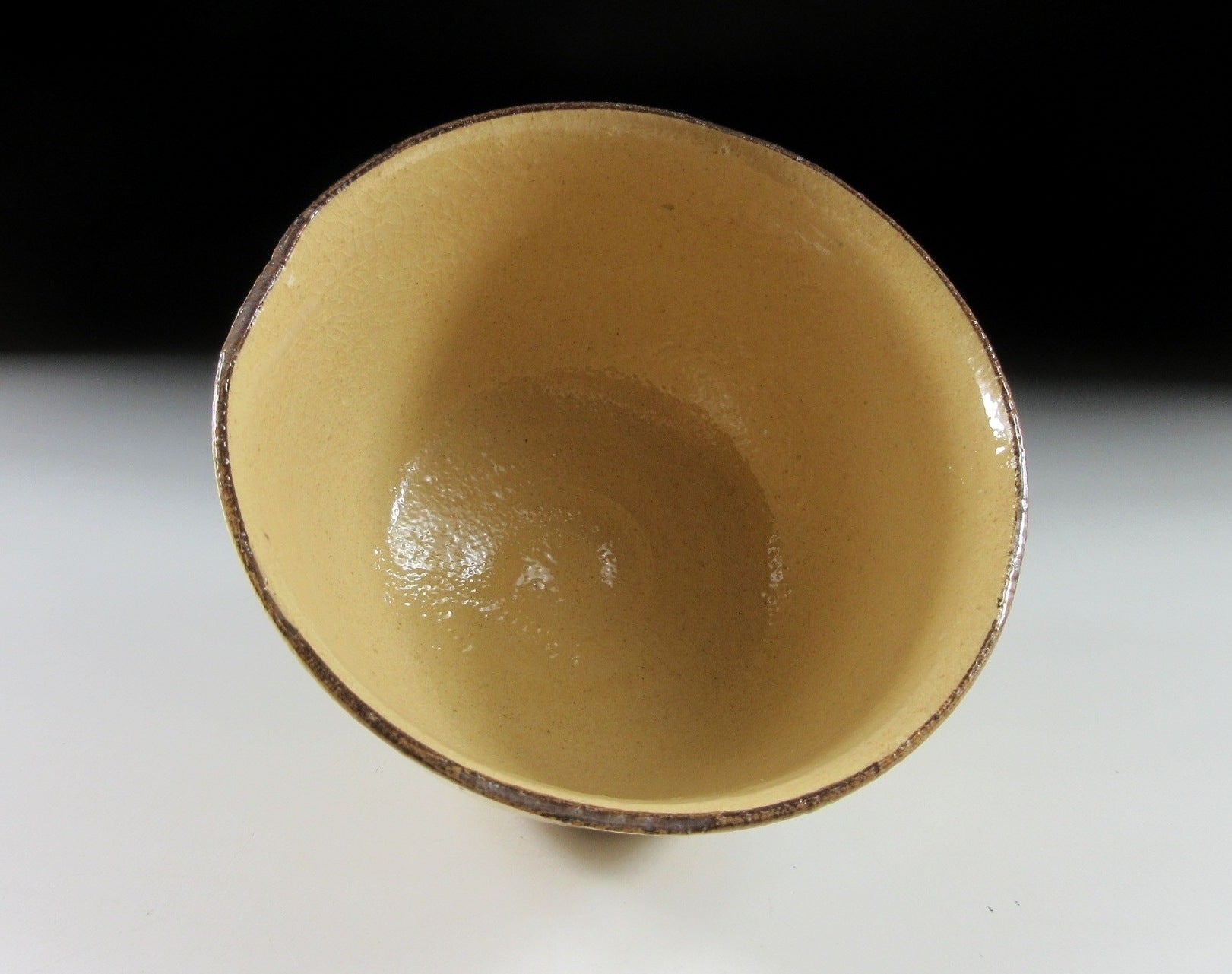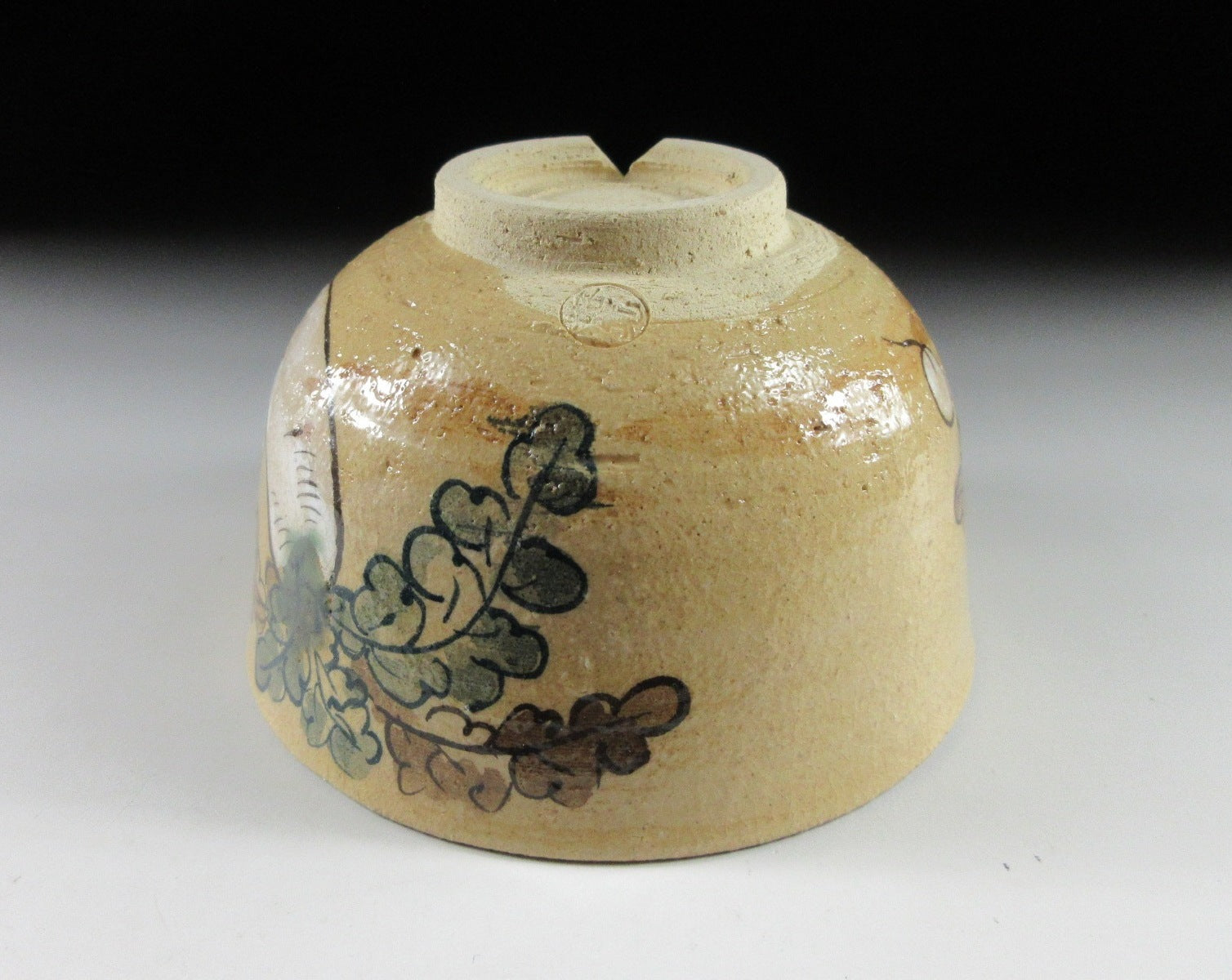Kominka Zakka
Shibata Yoshihiro Year of the Rat Chawan
Shibata Yoshihiro Year of the Rat Chawan
Couldn't load pickup availability
*SHIPPING OPTIONS VARY DEPENDING ON THE DESTINATION, PLEASE SCROLL TO THE END OF THIS LISTING FOR MORE DETAILS.
This listing is for a Seto-ware chawan made around 10 years ago by Shibata Yoshihiro. It is wheel-thrown and the front is decorated with a hand-painted depiction of a rat with a daikon radish. In Japan there is a small type of round-shaped radish with a long, thin root. The shape is similar to a chubby rat, and the root looks like a tail. These radishes are called ‘nezumi daikon’, which translates as rat daikon. For this reason rats and daikon are often depicted together on tableware and teaware, especially at New Year. This piece was most likely made to commemorate the Year of the Rat back in 1996. The stamp of the potter can be found on the bottom, and it comes with its original signed wooden storage box. It also comes with a turmeric coloured wrapping cloth for when the item is not in use, as well as a Japanese language profile paper. *PLEASE NOTE THAT THE CHASHAKU TEA SCOOP IS NOT INCLUDED.
Shibata Yoshihiro is a Seto-ware potter and current master of Hosen Gama. In the Keio era (1865-1868), the first generation opened a kiln in Mino that has now spanned five generations. In 1971 Shibata built a new kiln in the Nakabora pottery district in Seto City. In 1972 he was commissioned to produce pottery pieces for Miyako Odori, one of the four great spring shows held in the geisha district in Kyoto. He also held his first solo exhibition, and he was commissioned to produce teaware for Ichiriki-tei teahouse in Kyoto. Ichiriki-tei is a historic ochaya located in the heart of the Gion district. Shibata specialises in Ki Seto and black Kuro Seto teaware, and he also produces a splendid range of bonsai planters. **Fellow sellers, this information was researched by Kominka Zakka and CANNOT be used in your own listings.
Seto-ware was originally used to describe ceramics that were produced in and around the village of Seto, in Aichi Prefecture. The soil around the city contains good quality porcelain clay as well as silica for making glass. Among the major kiln groups established by the Kamakura period only those at Seto developed the deliberately applied glaze instead of the old natural ash glaze. The rich Seto glaze was perfected during the fifteenth century, and later adopted by potters of Mino Province. Seto is currently the largest producer of ceramic novelties, such as animal and bird okimono, dolls, ashtrays, and vases.
Ki-Seto is a member of the Mino-ware family. Seto-ware was originally used to describe ceramics that were produced in and around the village of Seto, in Aichi Prefecture. After the 16th century kilns began to produce Seto-guro (black Seto) and Ki-Seto (yellow Seto) wares.
Sizes
Box: H.12cm (4.7”) x 14.8cm (5.8”) x 14.8cm (5.8”)
Chawan: H.7.2cm (2.8”) x Dia.12.2cm (4.8”)
Condition
It’s in very good condition with no chips or cracks.
THESE ARE SHIPPING ESTIMATES BASED ON THE CURRENT GLOBAL SITUATION
**Germany, France, Greece, Spain, Poland, Austria, Slovakia, Lithuania, Slovenia: NO SHIPPING. Very strict and expensive packaging laws in place and we are not licensed to send products to these countries. We have no plan to register at this time because the process is in some cases very expensive and complicated, plus each country has its own set of regulations and application process.
**USA, UK, Canada, Australia, New Zealand, Switzerland, Norway: Airmail Small Packet (approx. 15-28 days). Combined shipping available up to 2kgs for Airmail Small Packet (please send us a message).
**Asia: Airmail Small Packet (approx. 15-21 days). Combined shipping available up to 2kgs for Airmail Small Packet (please send us a message).
**Central Asia, Middle East, South Africa, Brazil, Mexico: EMS Express 10-15 days.
**Russia: No shipping methods available.
Share
